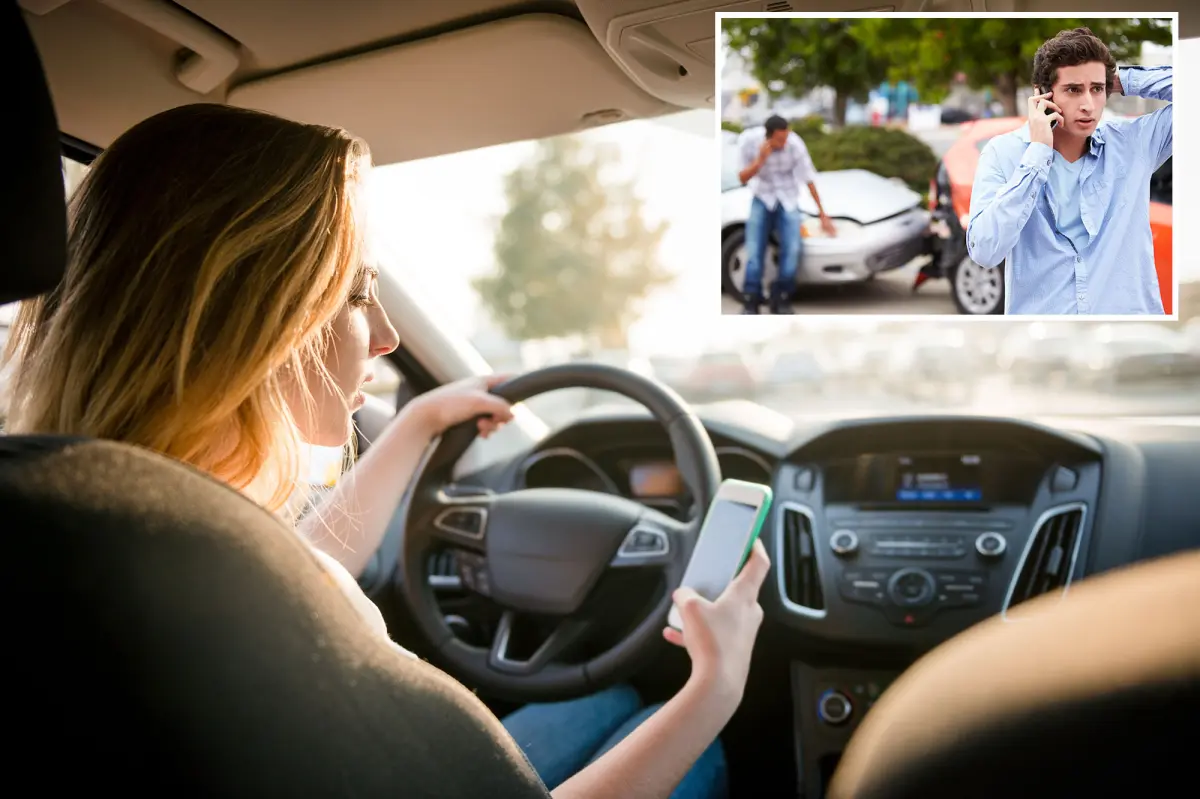By SWNS
Teenage drivers spend more than a fifth of their time behind the wheel looking at their phone, according to new research.
The worrying findings show that young motorists spend an average of 21.1% of each driving trip looking at their mobile device.
A survey completed by more than 1,100 teenage drivers across the United States showed they estimated that 26.5% of those glances were for two seconds or longer – a duration which “dramatically” increases the danger of crashing.
The findings, published in the journal Traffic Injury Prevention, show the most common reason for the distraction was entertainment (65%), followed by texting (40%) and navigation (30%).
Study lead author Dr Rebecca Robbins, of Brigham and Women’s Hospital, Boston, Massachusetts, said: “Distracted driving is a serious public health threat and particularly concerning among young drivers.
“Driving distracted doesn’t just put the driver at risk of injury or death, it puts everyone else on the road in danger of an accident,”
Across the US, 35 states have banned all types of phone usage for young drivers.
However, in a previous US study, 91.8% of teenagers still report “regularly engaging” in at least one distracted driving behaviour per trip – such as texting, talking on the phone, or using it to play music.
Researchers who conducted the new study wanted to identify the factors that distract teenagers while they are driving.
The team conducted 20 interviews with high school students.
The beliefs identified were incorporated into a 38-item questionnaire, which was put to a US geographic sample of 1,126 participants.
Responses indicate that many young motorists believe and understand that distraction at the wheel was associated with negative outcomes, and that their important social referents – such as their parents and friends – think they should not drive distracted.
However, they believe their peers also drive distracted, highlighting the perceived social norm of the behaviour.
But the survey also found that most teen drivers have a “strong belief” in their ability to withstand the pressure to drive distracted.
Dr Robbins said: “We found that while young drivers recognise the advantages of using smartphone features like GPS, they also understand the heightened risk of accidents associated with distracted driving.”
She added: “Encouraging the use of ‘Do Not Disturb’ mode, keeping phones out of reach and ensuring teens get adequate sleep are effective strategies to mitigate this dangerous behaviour.”
The study aims to assist teachers, parents, and local education chiefs to create message-based promotions.
The research team suggest that a campaign could be aimed at debunking the belief that phone use at the wheel allows people to be productive while driving.
